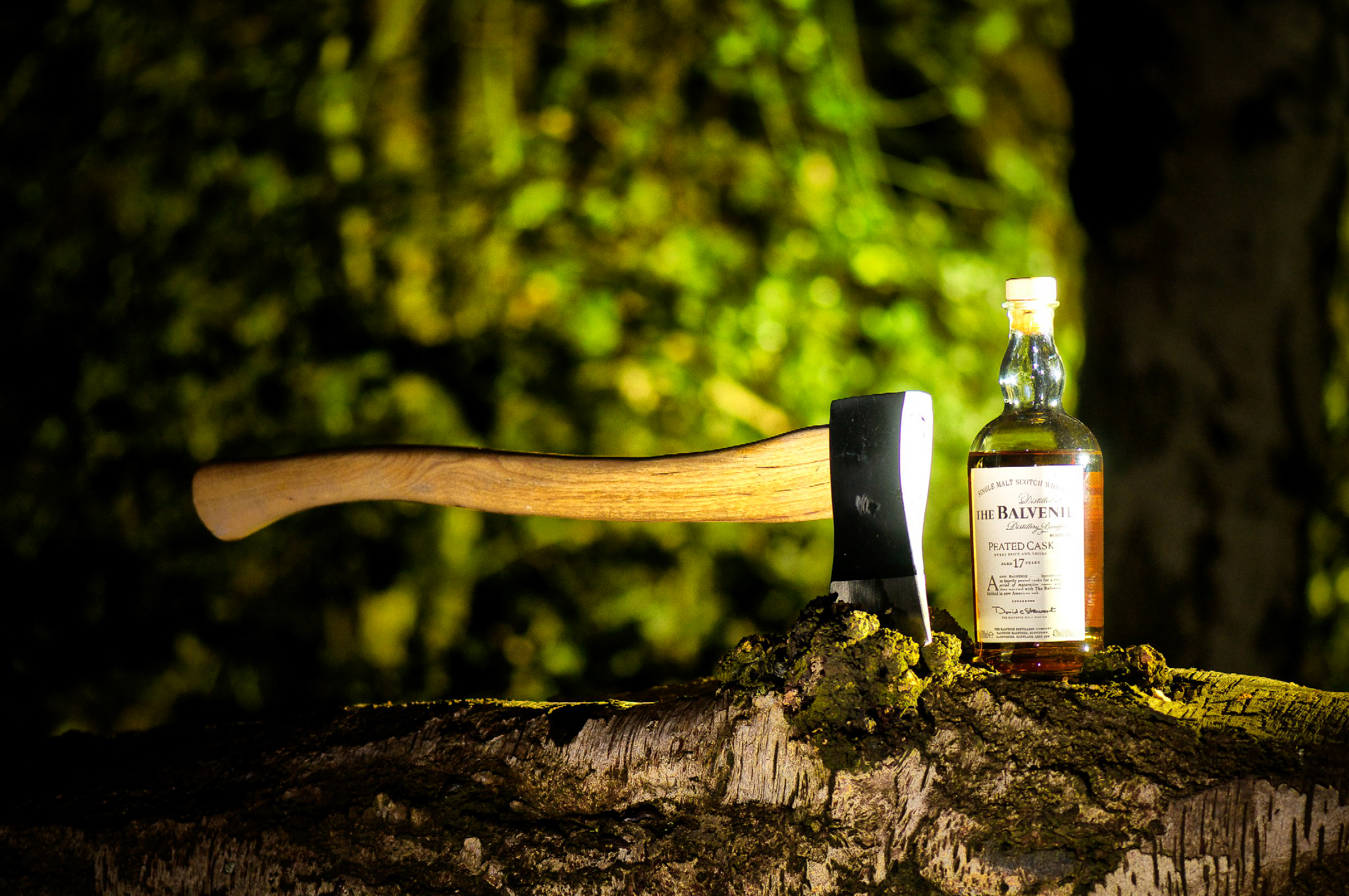the peated balvenie
Last year Eddie Vedder released his second solo album. He was renowned in the ’90s for his loud, fast paced and thoroughly enjoyable grunge music, but this one’s a little different. The musical accompaniment is almost exclusively the ukulele. Gone is the distorted guitar, the thrashing bass line and the heavy drums; in is the gentle strumming of nylon strings on a miniature body. It is a superb album and works, despite the antithetical nature of the sounds being brought to the table. The argument can be made that it works simply because of this dichotomy: the delicacy of the ukulele and the strength of Eddie Vedder’s voice, so suited to rawk, suddenly finds subtle hints and tones and edges that were never so clear before.
This one differs a little from the previous because the smoky liquor which imbued the casks previously is Balvenie’s own peated whisky. They brought in peated malt, most likely peated with their own source of local peat to their exacting specifications and distilled it themselves, just before a shutdown period. It seems they have no intention to release this whisky at present, although it seems nothing definite has been decided – it looks more likely that it will be used to season more casks for further work around the concept of peated casks. The whisky was aged for 16 years in first fill American bourbon barrels, then some was taken to be aged in the peated casks. First tastings revealed this had picked up too much character from the peat soaked wood and had lost the honey aspects they love so much – this seems to be the principle reasoning behind the unlikelihood of selling the peated whisky at any point – it simply isn’t The Balvenie. So instead of purely the peated-cask finished whisky, they married about 15% of this to 85% that had continued to age in American oak. This left them with enough smoke to stand out and enough honey to remain The Balvenie.
This is not a new phenomenon, not the first time an album has come straight out of left field. Scarlett Johansson produced a covers album of Tom Waits’ songs, Paul Anka produced a rock covers album and Bob Dylan made a (perhaps ill-advised) Christmas album. It is, however, one of the few times an album so different from the artists standard offering has been so good.
The Balvenie is all about honey. If you read their tasting notes, the word honey is mentioned almost as much as is humanly possible. It is impossible to drink any of their product and not think honey. What they are not about is peat-smoke. Although their maltings are peated, using peat from New Pitsligo (about 40 miles from the distillery, also famous for lace), they have never sought a peated profile and, until recently, they almost appeared to go out of their way to avoid the smoky flavours. In 2001, they released their Islay Cask – a 17year old expression finished for a matter of months in a refill Islay cask. Although they have never stated which distillery the casks were from, it is likely that it began with an L-, and ended with -aphroaig. I didn’t get a chance to try that one but I did get some of their latest smoky iteration, The Peated Cask.
But does this contrariety work? In my opinion, yes. Smoked honey is a beautiful flavour and it seems that this is the flavour combination The Balvenie sought. There is not so much smoke that it becomes obtrusive but rather an added warm note to the standard Balvenie complexity. I think Peated Cask is perhaps a slight misnomer – from the name one expected a full blast of peat. Instead the effect is more akin to what is seemingly their intention – a finish of peat, a final veneer, a gloss of smoky warmth, just to round off an already superb whisky.
Colour: Toffee Orange
Nose: Plummy and oaky, slight spices, like a plum chutney, rather than a plum jam; a slightly waxy, recently snuffed candle note with a hint of smoke.
Body: rich, spicy and smooth, warming.
Palate: Pepper and smoke hit immediately – fresh, clean hearth-fire smoke, with honey and salted fruit notes developing. More savoury than expected.
Finish: long, honey and fruit jellies are longest notes, smoke is reasonably short, allowing the savoury palate to segue back to the sweet nose.





